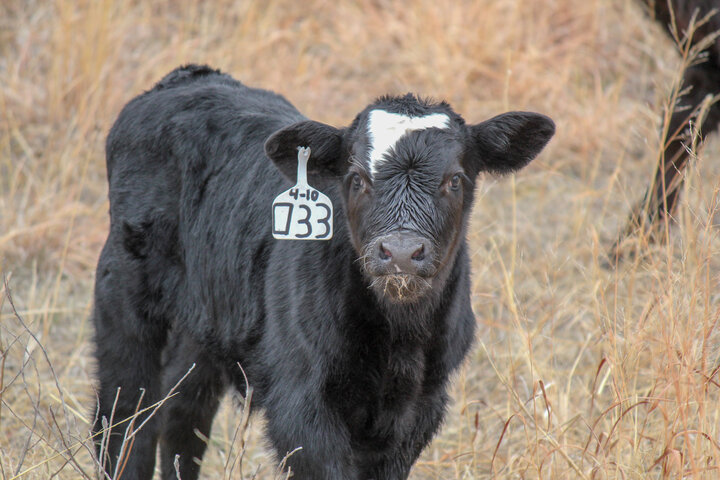According to the Center for Disease Control and Prevention (CDC), zoonotic diseases are pathogens that can be spread from animals to humans, leading to illness. The CDC reported 59 zoonotic outbreaks in 2017, causing over 1500 illnesses and three reported deaths. There are several different germs that have the potential to be zoonotic, with some more prevalent than others.
Zoonotic diseases can be prevented with proper protection. Consider an isolation area for treating sick calves that can be thoroughly cleaned and disinfected. A footbath containing disinfectant is helpful to prevent the spread in and out of the treatment area. Once the footbath contains organic material, it should be replaced with a fresh solution. Designate footwear and outerwear that can be easily cleaned or disposed after use. Keep a separate area to store work clothes once inside.Wear gloves and avoid touching your face when around animals. Always wash your hands with soap and water, especially before eating, drinking, or using tobacco products. While all people are susceptible to these diseases, young children, elderly, and immunocompromised individuals are at greater risk. Biosecurity is vital to prevent the spread of disease in both animals and people.
The disease lists can be categorized in different ways, such as route of transmission, type of pathogen, or production season. While it is important to familiarize yourself with all potential areas of concern, this article will focus on diseases that may be more commonly observed following contact with young calves.
Cryptosporidiosis
Cryptosporidiosis (Crypto) is a common disease that causes severe, watery diarrhea in both animals and humans. Of the 59 outbreaks in 2017, cryptosporidium was the most common at 41%. Crypto is caused by a very small parasite called Cryptosporidium, which can live in the environment for months. Once ingested by the animal, the parasite completes its life cycle in the intestines and is shed in the feces. Infected calves range from one to four weeks of age. Symptoms include lethargy, weakness, and diarrhea. Feces may contain bile, blood, undigested milk, and mucus. It is important to remember calves may be infected without showing clinical symptoms. Supportive care (fluid therapy, nutritional support) is the only treatment.
Crypto can be spread to humans through oral contact with contaminated soil, water, or feces. Symptoms in humans are similar to those observed in calves. Zoonotic transmission often occurs during calving season when treating infected calves. Multiple outbreaks have been reported in veterinary hospitals and farms across the country.
Salmonellosis
Salmonella is a widespread gram-negative bacteria that may cause diarrhea in young calves, with dairy calves being most prevalent. Infected cattle range in age from under one month to adult, with most patients lacking adequate colostrum intake at birth. Clinical symptoms may include fever, depression, diarrhea, and swollen joints. Carrier animals may not show any clinical signs. A human outbreak from contact with dairy calves infected with Salmonella occurred in 2018, leading to 56 cases with 17 hospitalizations. Salmonella can also be spread by ingestion of contaminated food sources, including unpasteurized milk.
E. coli
Enterotoxigenic E. coli is a bacteria that affects calves between one to four days of age. Newborn calves are exposed to E. coli through environmental contamination. Risk of infection increases when calving in contaminated environments. Symptoms include weakness, depression, watery diarrhea, and dehydration. E. coli can be directly spread to humans through fecal-oral contamination. Twenty percent of the 2017 enteric disease outbreaks were caused by E. coli.
Rabies
Rabies is a fatal, yet preventable viral disease. While human rabies cases in the United States are rare, it is not uncommon to diagnose the virus in cattle. According to the CDC, there were more rabies-positive diagnoses in cattle (43) than dogs (37) in the United States in 2020. Rabies is transmitted through direct contact with saliva or nervous tissue from an infected animal. Cattle are considered exposed to rabies if bitten by a rabid animal and/or if a calf is nursing a rabies-positive cow or a cow is nursing a rabies-positive calf. Clinical signs vary greatly, but rabies should be considered with any abnormal behavior such as lameness, difficulty swallowing, and unusual bellowing. Always contact your veterinarian with animal health concerns prior to exam.
Interviews with the authors of BeefWatch newsletter articles become available throughout the month of publication and are accessible at https://go.unl.edu/podcast.
You can subscribe to the BeefWatch newsletter here: http://go.unl.edu/Beefwatch_subscribe

